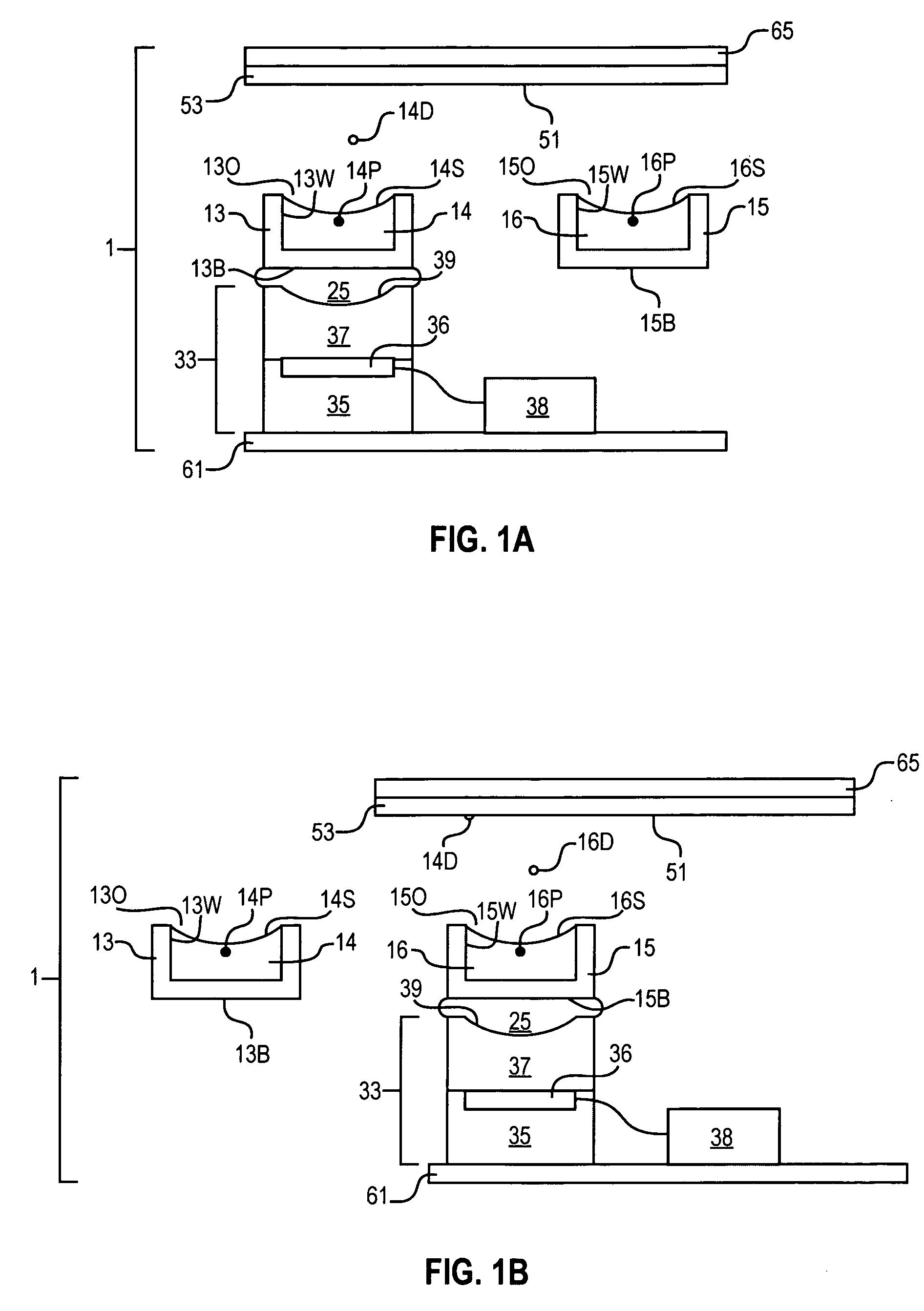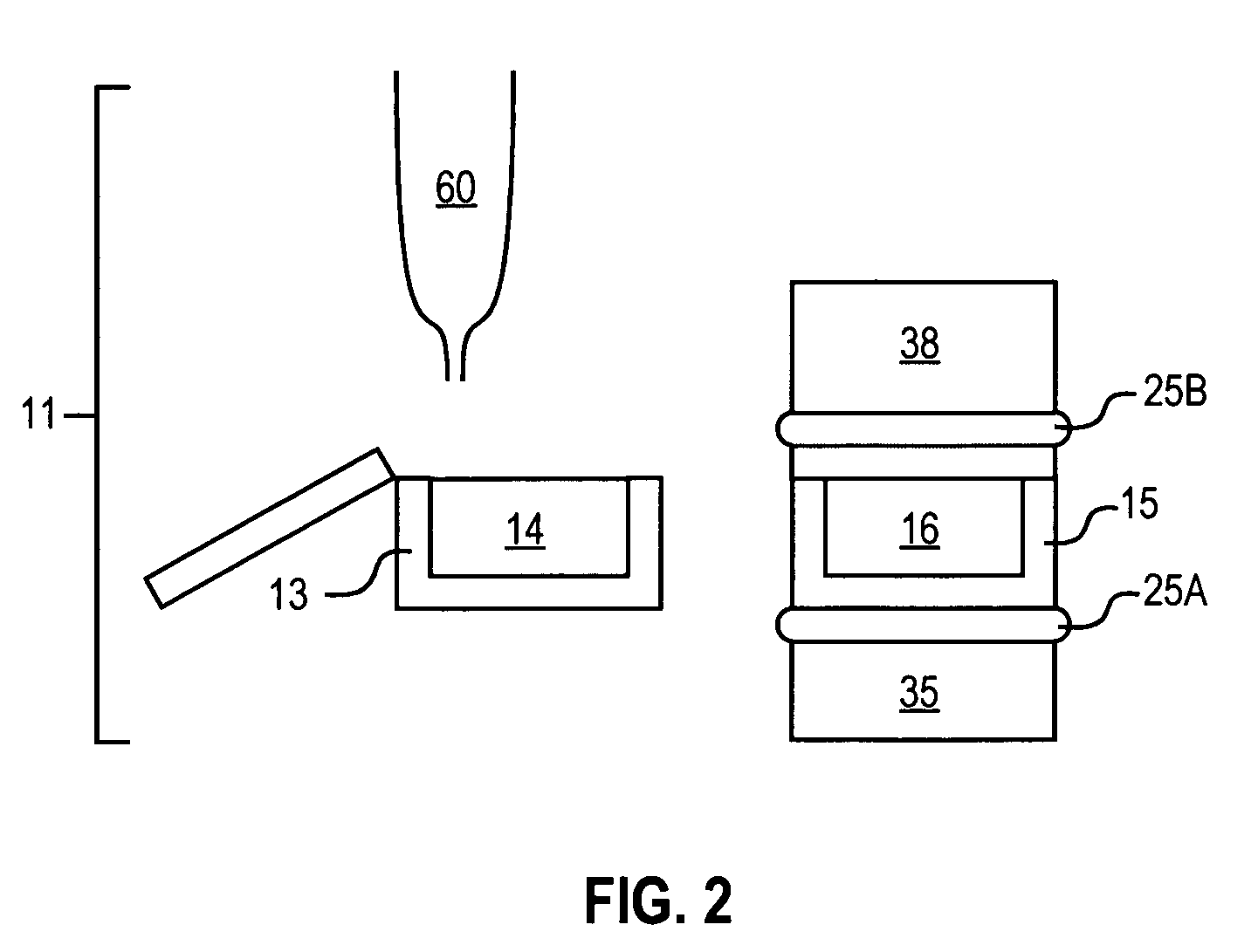Acoustic assessment of characteristics of a fluid relevant to acoustic ejection
a fluid and acoustic energy technology, applied in the direction of liquid/fluent solid measurement, specific gravity measurement, machines/engines, etc., can solve the problems of affecting the integration of the process and and affecting the quality of the resulting produ
- Summary
- Abstract
- Description
- Claims
- Application Information
AI Technical Summary
Problems solved by technology
Method used
Image
Examples
example 1
[0185]Measurements were made to determine the usefulness of acoustic echoing to carry out in situ measurement of fluid properties. About 45 uL of fluid comprised of a solution containing 70% DMSO and 30% water was pipetted into a well of a polypropylene well plate containing 384 wells. The fluid exhibited a concave fluid surface in the well. A transducer was aligned at approximately the center of the well and the transducer height was optimized for ejection. A toneburst was applied to the fluid as to perturb the fluid surface and to produce a subthreshold ejection cone. A toneburst was then applied to the transducer (10 MHz, F#2), of 10 MHz center frequency, and of energy approximately 1.5 dB below ejection threshold. The initial cone produced contained many spatial frequencies, which propagated as capillary waves outward toward the well walls. Then, the waves were partially reflected from the well walls through the center of the well, toward the opposing well walls, again reflected...
example 2
[0189]Measurements similar to those described in Example 1 were made except that a fluid containing 100% DMSO was employed in place of the solution containing 70% DMSO and 30% water. FIG. 8 is a graph that plots the measured echo delay time for this fluid as well as for the solution containing DMSO and water mixture as a function of time after the toneburst. Since optimal delay time is slightly different for the two fluids, the data for the mixture is plotted with an arbitrary offset in the vertical direction for ease in visual comparison.
[0190]The data for the two fluids were fitted to exponentially decaying sinusoidal waveforms, in the time period 25 millisecond
example 3
[0192]A well of a well plate is filled with a fluid. A transducer is aligned at approximately the center of the well, and the transducer height is optimized for ejection. A toneburst is applied to the fluid as to perturb the fluid surface and to produce a superthreshold ejection cone. As a result, a droplet is formed and separated from the ejection cone.
[0193]Before, during and after the formation of the ejection cone, a series of echo pulses is generated to monitor the perturbation of the fluid surface. As a result, the formation of the droplet is monitored through a series of such echo events.
PUM
| Property | Measurement | Unit |
|---|---|---|
| time | aaaaa | aaaaa |
| length | aaaaa | aaaaa |
| length | aaaaa | aaaaa |
Abstract
Description
Claims
Application Information
 Login to View More
Login to View More - R&D
- Intellectual Property
- Life Sciences
- Materials
- Tech Scout
- Unparalleled Data Quality
- Higher Quality Content
- 60% Fewer Hallucinations
Browse by: Latest US Patents, China's latest patents, Technical Efficacy Thesaurus, Application Domain, Technology Topic, Popular Technical Reports.
© 2025 PatSnap. All rights reserved.Legal|Privacy policy|Modern Slavery Act Transparency Statement|Sitemap|About US| Contact US: help@patsnap.com



